In the process of core drilling with wireline, real-time measurement of temperature and pressure at the bottom of the well helps to improve the core sampling process and increase the core recovery rate. Meanwhile, the in-situ measurement data of the core at the bottom of the well is of great significance for understanding the physical properties of the core, which is particularly evident in the exploration of natural gas hydrates in marine areas. This paper mainly introduces the structure and working principle of a temperature and pressure collector built into pressure core sampling tools. The collector is powered by a dry battery, with a single working time of >72 h, capable of collecting and storing temperature and pressure parameters inside the core barrel throughout the sampling process. After connecting to a computer, all data can be obtained. By being mounted on the Marine Geological No. 10 drilling ship, this collector completed a sea trial experiment, obtaining temperature and pressure data throughout the wireline coring process. The collected data is consistent with the actual coring process, indicating that the data is stable and reliable.
Wireline coring; Pressure core sampling tools; Temperature and pressure collection; In-situ measurement; Marine natural gas hydrate
With the gradual implementation of the strategic layout for deep earth exploration, the current workload of deep-sea drilling and deep earth drilling in China is increasing. Core drilling is the most important and direct method for us to understand the geological conditions of the deep earth. The wireline coring technique does not require pulling the drill after the drilling cycle ends; instead, the inner pipe assembly is retrieved to the surface using a downhole retrieval tool to obtain the core, which has technical characteristics such as high efficiency and ease of operation, making it widely used in deep-sea and deep-earth drilling.
The pressure core sampling tool uses wireline retrieval to bring back pressurized cores from deep earth to the surface, and through special processing, it can maintain the original state of the core, facilitating the analysis of various substances’ states and contents within the core while underground, allowing for accurate judgment of resource composition and reserves in the formation. Pressure core sampling technology plays an indispensable role in the drilling and coring of coalbed methane, deep oil and gas, and marine natural gas hydrates. Extensive research has been conducted both domestically and internationally on the structure and coring process of pressure core sampling tools, resulting in various products and field applications. However, during field applications, there are common issues with the pressure retention success rate and actual core recovery rate of pressure core sampling tools, partly due to unclear parameters such as pressure and temperature in the well, leading to deficiencies in the sampling process. Therefore, monitoring the entire coring process data and improving the drilling sampling process is of certain guiding significance for increasing the sampling rate. Additionally, in the drilling and sampling of marine natural gas hydrates, in-situ measurement of parameters such as temperature and pressure of hydrate cores is of great significance for studying the characteristics of natural gas hydrates.
Due to the compact structure and limited internal space of pressure core sampling tools, developing a temperature and pressure collector that fits them is challenging. No publicly reported pressure core sampling tools with real-time measurement and recording of core temperature and pressure data have been found domestically or internationally. For drilling technicians, it is difficult to timely and accurately improve the sampling process without knowing the actual parameters of the core underground, thus necessitating the development of a temperature and pressure collector that can be built into sampling tools to address the above issues.
The TKP series pressure core sampling tools are products developed by the Beijing Institute of Exploration Engineering after years of research. These tools are mainly used for sampling marine natural gas hydrate samples and have successfully completed multiple experimental validations in various marine areas of China, achieving good results. Among them, the TKP-1 pressure core sampling tool is a push-in type that uses a plate valve pressure retention structure, suitable for soft to medium-hard formations, with a total length of 3.5 m, core diameter of 52 mm, core length of 1 m, and pressure retention capacity of 20 MPa; the TKP-2 pressure core sampling tool is a rotary type that uses a ball valve pressure retention structure, suitable for medium-hard to hard rock formations, with a total length of 4.9 m, core diameter of 54 mm, core length of 3 m, and pressure retention capacity of 20 MPa. The inner pipe assembly of the TKP-2 pressure core sampling tool consists of a retrieval spearhead, accumulator, temperature and pressure collector, core barrel, ball valve assembly, and core drilling head, as shown in Figure 1.

Figure 1 Inner tube assembly of TKP-2 series pressure core sampler
The working principle of the pressure core sampling tool is to perform coring while drilling and retrieve the core using wireline. First, the inner pipe assembly is deployed to the bottom of the well, entering the outer pipe assembly at the bottom of the well, and then the top drive and mud pump are started to begin coring. During the drilling process, the drill string drives the sampling tool to rotate, and the core gradually enters the core barrel. After the drilling cycle ends, when retrieving the inner assembly using wireline, the ball valve is flipped closed through differential action, and the accumulator pressurizes the core barrel to maintain internal pressure, achieving pressure core sampling.
To monitor the temperature and pressure parameters in the well throughout the coring process of the pressure core sampling tool during natural gas hydrate drilling, a built-in temperature and pressure collection system has been developed based on the TKP series pressure core sampling tools. This collector is installed in the core barrel at the lower end of the accumulator, located at the upper part of the core barrel (see Figure 1), and in actual use, the temperature and pressure data inside the core barrel is read. The temperature and pressure collector mainly consists of a shell, waterproof connector, mounting plate, controller, battery, collection card, and sensor group, as shown in Figure 2.

Figure 2 Composition of the collector system
This collector has the following technical characteristics:
(1) Compact structure, overall dimensions Ø54 mm×355 mm, can be directly installed inside the core barrel of the pressure core sampling tool;
(2) Made of high-strength alloy steel, pressure resistance >25 MPa;
(3) The overall power consumption of the system is low, with continuous working time >72 h;
(4) Simple data interface, a single interface can read data and charge the battery, eliminating the need for frequent disassembly to replace the battery;
(5) Equipped with a 24-bit data acquisition system, with high sampling accuracy;
(6) 4 MB memory, capable of storing a large amount of data;
(7) When the collector is not in operation, the system can be put into sleep mode through software to reduce power consumption.
3.1 Working Principle
The working principle of the temperature and pressure collector is to use sensors to collect temperature and pressure signals inside the core barrel and input them into the data acquisition card through circuits. The acquisition card processes this signal and converts it into a digital signal that can be recognized by the controller, which then processes and stores the data. By using a waterproof connector at one end, a custom data cable connects to a computer for data reading. The components of the acquisition system are powered by a lithium battery, and the circuit principle is shown in Figure 3.
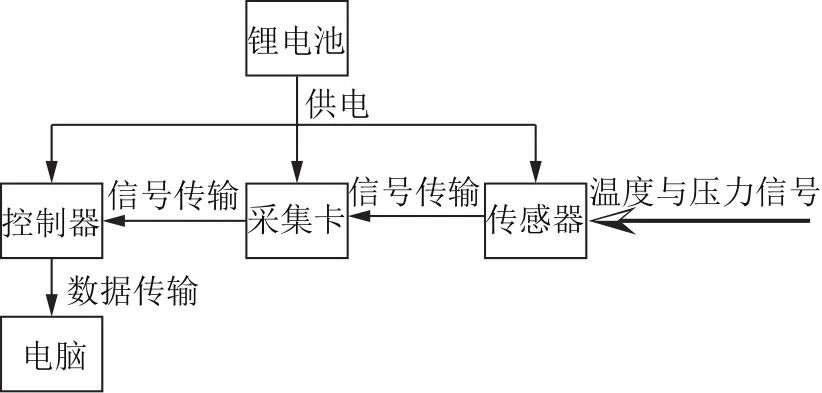
Figure 3 Working principle of the collector
Fig.3 Working principle of the collector
Main Components
3.2.1 ADS1256 Data Acquisition Card
The ADS1256 is a data acquisition card launched by Texas Instruments (TI) Burr-Brown product line for industrial applications. This acquisition card features the industry’s highest performance analog-to-digital converter (ADC), consisting of an analog multiplexer (MUX), input buffer (BUF), programmable gain amplifier (PGA), programmable digital filter, and serial external interface SPI. This data acquisition card has the following characteristics: (1) 24-bit acquisition accuracy; (2) Wide acquisition voltage range, with a conventional acquisition voltage of 0~-5 V, and the minimum voltage acquisition range can reach ±78.125 mV through the programmable gain amplifier (PGA); (3) Provides 8 analog input channels, which can be configured to 4 differential inputs or 8 single-ended inputs through the analog multiplexer register; (4) Power supply voltage is 5 V, communication method is SPI bus. To reduce signal interference, this acquisition system adopts a differential input method, thus it can collect a total of 4 signals.
3.2.2 ESP32 Core Processor
This collector uses the ESP32 integrated data development board, which is widely used in the Internet of Things (IoT) and is a mature industrial product on the market, equipped with the ESP32-WROVER-B core processor produced by Espressif. The main parameters of the development board are: 240 MHz dual-core 32-bit LX6 microprocessor; 4MB flash QSPI memory/SRAM, capable of storing a large amount of data; the development board supports Bluetooth and WiFi communication functions, with good expansion capabilities; it has two SPI interfaces, one I2C interface, and two serial ports, enabling communication with various modules.
3.2.3 Pressure Sensor
Due to the very small internal space of the collector, the selected pressure sensor must be compact while maintaining high precision. This acquisition system uses a sputtered thin-film pressure sensor, which is stable in performance and compact in structure, with overall dimensions Ø14 mm×45 mm, measurement range of 0~30 MPa, measurement accuracy of ±0.1%, excitation voltage of 5~12 V, and operating temperature of -30~160 ℃. Figure 4 shows the actual sensor.
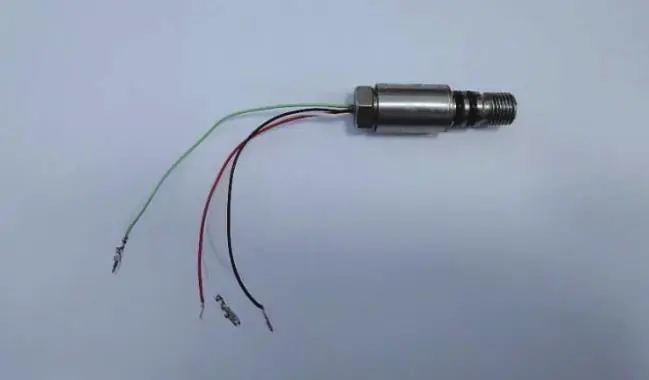
Figure 4 Pressure sensor
Fig.4 Pressure sensor
3.3 System Hardware Connection
The temperature and pressure collector mainly consists of sensors, acquisition cards, clock modules, and development boards. The development board is powered by 3.7 V, and has pins that can output 5 V, which are used to power the temperature sensor, pressure sensor, and ADS1256 data acquisition card; the signal output pins of the sensors are connected to the AIN ports of the ADS1256 data acquisition card; the acquisition card is connected to the development board via the SPI bus; the clock module is connected to the development board through the I2C bus. The internal circuit structure of the completed collector is shown in Figure 5.
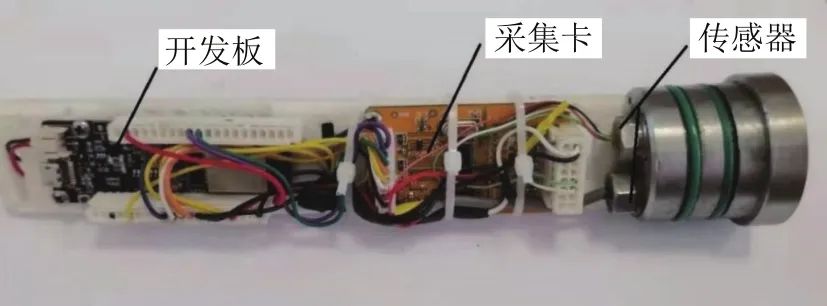
Figure 5 Physical structure of the collector internal circuit
Fig.5 Physical structure of the collector internal circuit
3.4 Acquisition Card Control Program
This acquisition card uses the ESP32 core processor, and the integrated development environment is the Arduino IDE software. Arduino is an open-source electronic prototyping platform developed by a European team that is convenient and flexible for beginners. Arduino can sense the environment through various sensors, and many hardware developers are now using Arduino to develop products, as well as many software engineers entering hardware and IoT development fields using Arduino. This software control program is written in C language, which is simple in structure and widely used. The control program includes system initialization configuration, serial communication, data acquisition, data conversion and storage, data reading and deletion, etc. Figure 6 shows its flowchart.
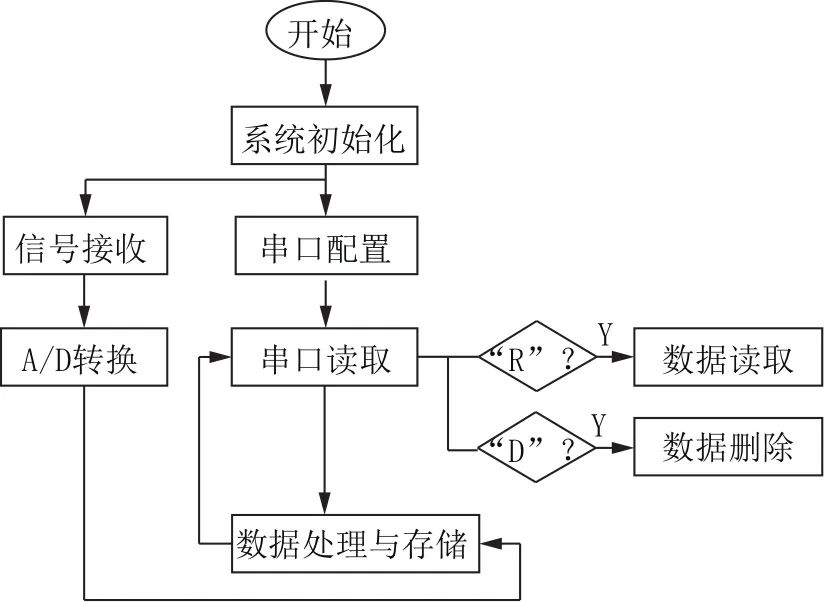
Figure 6 Collector workflow
Fig.6 Collector workflow
Once the program starts working, it first performs system initialization, conducts a self-check of the overall functions, configures the internal file data of the system, and defines the functionality of all pins on the development board.
The second step completes the configuration of SPI communication and I2C communication, establishing communication connections with the clock module and ADS1256 acquisition card module; it also configures serial communication, sets baud rate, sets sampling frequency, and sets functional parameters for each module, preparing for data reception.
The third step inputs the signals received by the sensors into the ADS1256 data acquisition card, utilizing this acquisition card to convert the raw signals into digital signals, completing the A/D conversion function.
The fourth step uses the ESP32 processor to perform calculations and integration on the data, storing it in the internal file data system.
The fifth step connects to a computer, using serial communication to read the data. When the serial port reads “R”, all data stored in flash is read; when the serial port reads “D”, the flash is cleared.
In June 2021, our research team was mounted on the Marine Geological No. 10 drilling ship to conduct sampling operations in a certain marine area of the South China Sea. Since this voyage was a routine sampling operation, and the area was not located in a natural gas hydrate zone, the temperature and pressure collector only performed a functional test of the wireline coring.
Workflow of the collector:
(1) To ensure sufficient power supply, first charge the collector through the computer.
(2) Before the operation, connect the collector to the computer via a data cable to test whether the data collection and storage functions are normal.
(3) Upload the collection control program to the collector’s chip, setting the sampling time interval to 5 s and the serial communication baud rate to 115200 bps.
(4) After successfully uploading the program, read the temperature and pressure data again, and after confirming that the data is normal, clear the flash.
(5) Connect the collector to the sampling tool and assemble the sampling tool.
(6) Start the sampling operation, with the collector descending into the well along with the sampling tool, recording the actual downhole and surface times.
(7) After surfacing, remove the collector from the sampling tool, clean it, connect it to the computer via a data cable, and then read the temperature and pressure data throughout the wireline coring process.
The operating water depth in this marine area was 329 m, and the site successfully completed 10 consecutive pressure core sampling operations. During the 11th operation, the temperature and pressure collector was installed in the sampling tool for functional testing. The temperature and pressure data obtained by the collector are shown in Figure 7. The actual sampling process started at 8:24 AM when the sampling tool began descending into the well. As can be seen from the figure, as the depth of the water increases, the internal pressure begins to rise gradually, reaching a peak of 3.2 MPa around 8:28. Based on the operating water depth, it can be inferred that the inner pipe assembly has reached the bottom of the well. The sampling tool worked at the bottom of the well for about 15 minutes, and the collected pressure data remained around 2.7 MPa, with stable data. At 8:45 AM, the internal assembly was retrieved, and at 8:53 AM, the sampling tool surfaced, but it was found that the ball valve of the sampler did not close completely, resulting in a pressure retention failure for this cycle. The temperature and pressure collection curve clearly shows that the ball valve did not successfully close at the bottom of the well, leading to a continuous drop in pressure during the retrieval process. The temperature and pressure curves obtained by the collector match well with the operational process of the sampling tool, further confirming the reliability of the data obtained by the collector.
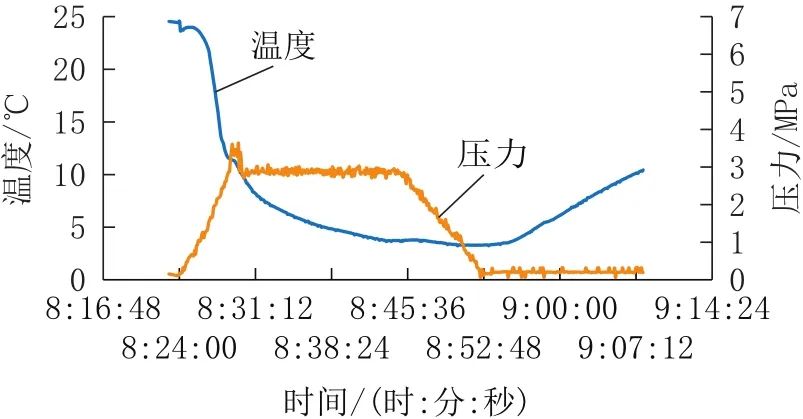
Figure 7 Temperature and pressure data curves
Fig.7 Temperature and pressure data curves
(1) By applying the ESP32 processor and data acquisition card, a temperature and pressure collection system built into pressure core sampling tools has been successfully established. This collection system features a compact structure, high collection accuracy, and long working time. By designing the hardware circuit and software program, temperature and pressure data collection and storage have been achieved.
(2) Since this voyage did not involve natural gas hydrate sampling operations, the collector only underwent one cycle of functional testing, achieving monitoring of temperature and pressure data throughout the wireline coring process. The obtained data aligns with the actual coring process, confirming its reliability. Our team will seek suitable natural gas hydrate target layers for comprehensive pressure core sampling operations in the future to further verify and improve the functionality of the collector.
(3) Timely understanding of temperature and pressure parameters during the drilling coring process is beneficial for improving the coring process and increasing the core recovery rate. Moreover, the in-situ measurement technology of the core is conducive to analyzing the characteristics of the core, indicating that this collector holds significance in marine natural gas hydrate drilling and sampling.
References
(See the original text for details)
Cite this article: DENG Dudu, RUAN Hailong, ZHAO Yi, et al. Development and application of the temperature and pressure collector in the pressure core sampler[J]. Drilling Engineering, 2022,49(6):116-121.
This article was published in Drilling Engineering, 2022, Issue 6. Click “Read Original” to download the original text.